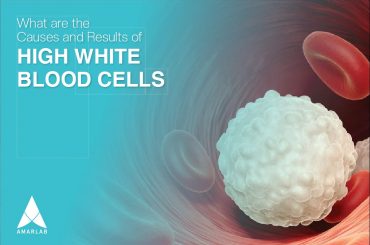Lipid profile or lipid panel test, also known as total cholesterol test, is a set of tests performed to evaluate the risk of coronary heart disease and other heart related diseases. The test works as a preventive strategy to check for any health conditions that may happen because of irregular eating habits, stress, or lack of exercise.
What is Lipid Profile Test
Lipid profile test is a group of tests that measures the level of specific lipids in the blood. Lipids are basically fats that are essential constituents of cells and also work as the source of energy. The test measures the following components:
- Total cholesterol. Total amount of cholesterol in all lipoprotein particles.
- High density lipoprotein cholesterol (HDL-C). Cholesterol in HDL particles, known as “good cholesterol” for reflecting cholesterol transferred to the liver for elimination.
- Non-HDL cholesterol (non-HDL-C). “Total cholesterol minus HDL-C” refers to this type of cholesterol. This is also known as “bad cholesterol,” because it deposits in the form of “plaques,” which can result in blockages.
- Triglycerides. All lipoprotein particles contain triglycerides. And, it is available with the highest concentration in very low-density lipoproteins (VLDL).
What is Lipid Profile Test Used for
A lipid profile is primarily used for a variety of reasons. Some of them are given below:
Check Cholesterol Level
The test measures the amount of cholesterol in your blood. If the blood cholesterol level is high, that may lead to different complicated health conditions later on such as: abnormal blood pressure, chest pain, shortness of breath and many more.
Estimate the Risk of Cardiovascular Disease
Cardiovascular disease refers to problems with the heart or arteries, such as heart attack. Excess cholesterol in the arterial walls can lead to these fatal diseases. So the test is helpful in determining if you are likely to develop the disease or not.
Evaluate Pancreatitis
Pancreatitis is a serious medical condition of the pancreas getting inflamed. It can happen due to a variety of factors. Having excessive blood triglyceride levels is one of those. Hence, if you ever have pancreatitis, your lipid profile will be crucial to see if you have high triglycerides.
Monitor Treatment Response
The doctor often recommends taking lipid-modifying medications to lower the risk of cardiovascular disease or pancreatitis. A lipid profile may be necessary on a regular basis to see if the medication is working properly.
What is Lipid Profile Test Normal Range
Cholesterol levels are typically measured in milligrams (mg) per deciliter (dL) of blood. The following chart shows how different types of cholesterol measurements are classified:
| Total Cholesterol Level | Category |
| Less than 200 mg/dL | Normal |
| 201 to 240 mg/dL | Borderline |
| More than 240 mg/dL | Higher risk of heart disease |
| HDL Cholesterol Level | Category |
| 60 mg/dL or higher | Protective against heart disease |
| 40 to 59 mg/dL | Borderline |
| Less than 40 mg/dL | High risk factor for heart disease |
| LDL Cholesterol Level | Category |
| Less than 100 mg/dL | Normal |
| 100 to 129 mg/dL | Above optimal |
| 130 to 159 mg/dL | Borderline high |
| 160 to 189 mg/dL | High risk of heart disease |
| 190 mg/dL or more | Very high risk of cardiovascular disease |
| Triglycerides Level | Category |
| 150 mg/dL or less | Normal |
| 151 to 200 mg/dL | Risk of heart disease |
| More than 200 mg/dL | Higher risk of heart/coronary artery disease |
What Causes High Lipid Profile
The lipid profile in a person’s body can rise due to multiple reasons, including:
Medical Conditions
A variety of medical disorders can affect cholesterol levels. Some risk factors include the following:
- Diabetes
- Kidney disease
- Cushing’s syndrome
- Hypothyroidism
- Lupus
- Metabolic syndrome
- Polycystic ovary syndrome (PCOS)
Food
Consumption of excessive saturated fat or trans fat can elevate the cholesterol level.
- Saturated fat. This type of fat can increase your LDL levels. Both plant-based and animal-based foods contain saturated fat such as: coconut oil, palm oil, cheese, butter, milk etc.
- Trans fat: This type of fat is also known as trans-fatty acids which are even more fatal than saturated fat. The reason is trans fats can raise your LDL levels but reduce your HDL levels. Margarine, potato chips, and different animal-based products are such high-fat food.
Other Risk Factors
Alongside, complex medical condition and poor diet, some other risk factors can also result in high lipid profile, as per the following:
- Obesity. Being ignorant to follow a healthy diet can make you overweight. And, that can significantly increase your chance of facing the troubles caused by a high lipid profile. If your body mass index (BMI) is higher than 30, your cholesterol level can rise a lot.
- Lack of physical exercise. Physical activity is essential to mitigate your risk of developing heart disease. If you remain physically inactive, your LDL level may increase and that may put you at risk of critical health conditions.
- Smoking. Cigarette smoking is incredibly harmful for your lungs. Smoking habit lowers the HDL cholesterol in your body. Hence, bad cholesterol remains inside your arteries that can contribute to a greater risk of further health complications.
- Alcohol consumption. Drinking alcohol is another major risk factor that can increase the level of total cholesterol. As a result, you may become a victim of severe heart disease.
- Family history. If you have a family history of heart problems, like coronary artery disease, your lipid profile can be high.
What Happens When Lipid Profile is High
High lipid profile can lead to a harmful buildup of cholesterol and other deposits on your artery walls (atherosclerosis). These deposits (plaques) can restrict blood flow through your arteries, causing problems such as:
- Chest pain. You may have chest discomfort and other symptoms of coronary artery disease if the arteries that supply blood to your heart (coronary arteries) are severely affected due to high cholesterol.
- Heart attack. When plaque tears or ruptures, a blood clot might form at the site of the rupture, That may obstruct blood flow or clog an artery downstream. Hence, a risk of heart attack increases when blood flow to a portion of your heart stops.
- Stroke. The risk of strokes elevates when a blood clot stops the flow of blood to a portion of your brain.
AmarLab offers all kinds of diagnostic tests from home. Your doctor may order the lipid profile test if you have signs and symptoms of high cholesterol level in the body. If you can hardly manage time to visit a clinic or diagnostic center, AmarLab is here for your help. On the other hand, for an old sick patient at home, we will take care of collecting the sample from your home.
You can always choose the lab of your choice from our lab partners. We collect samples from the patient’s home to lessen their trouble. And, our medical technologists maintain proper healthcare guidelines while receiving the urine sample at the patient’s home and sending them to the preferred lab on time.
Contact us via AmarLab’s Facebook page, website or you can call our hotline number (09643445566) to order your lab tests, sitting at home.





